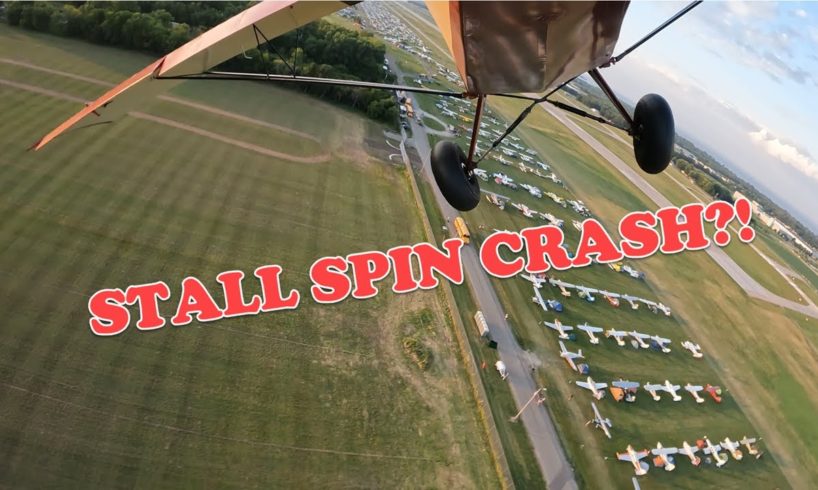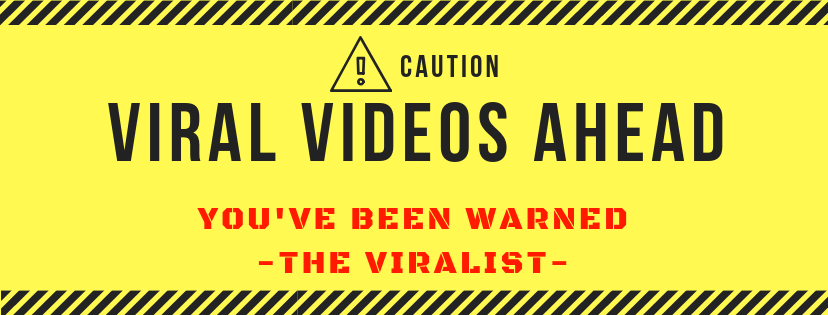
I wanted to talk about this in my last video, but I just don’t think it fit in, so I created another video to talk about it.
As aviators, I think it is important to always be learning. I learned from a recent experience and I am hoping this video helps others avoid a similar situation as well.
Thanks for the motivation and letting me borrow a couple of clips: @AirshowStuffVideos @TrentonPalmer @Bigtirepilot
Here’s where you can pitch in for the Dafoe Family:
https://www.gofundme.com/f/76yg4e-tom-dafoe-memorial-fund
and
https://www.gofundme.com/f/tom-dafoe-memorial-fund
#STOL #EAA #eaaairventure #aviation #bushplane #justhighlander #kitfox #airshow2022 #lifelonglearner #lifelonglearning #crash #airplanecrash #planecrash
source







Click, bait, bum. Thanks for respecting everyone's time.
If you were nearest stall speed, a new executed return, the next event is very much predictable?
Speed is life!
Thank you for that story. We all learn
👍 Good job in recognizing and correcting your mistake. If the weather is calm and you have enough fuel, go around to set yourself up with a nice straight approach 👌
Thank you for sharing your experience
stop the music pleas !!
https://youtu.be/opMdtzhg5_Q
Wow the accident that killed that other pilot reminded you and you were able to work around it. Learning from others is super useful.
Clickbait trash
Without going into great detail, I witnessed a pilot do this very thing this afternoon in Erie, Co. He was on base for a short final and overshot the centerline of the runway. It was in his attempt to go back that this happened. My heart jumped for a split second before the guy got out of it, just as you did, but he ended up getting back to the runway and landing on that attempt. (I'm not a pilot)
"It really hit me, the gravity of the situation." Yep, gravity is a bitch.
Personally or wouldn’t never ever again fly that plain or fly very light airplaines again. You said it yourself, a more experienced pilot just died. You just survived it, next time you won’t.
Definitely pucker factor x 100 glad you got used to hitting that rudder instead or right stick. When I was learning power on stalls way back when I would always default to using the stick instead of rudder at first and was a hard habit to fix. Had you done that here who knows what would’ve been.
That would be so scary. I would have been shaken up bigtime. Thankfully you were quick enough to avoid the stall spin
Stalls and spins are the reason I quit flight school. I don’t trust myself in doing it right solo in a real emergency. 😂
TRUE AND THANKS
This is a classic case of DMMS. Kills 90% of GA pilots. Multiple times a month
Wow man I'm soo happy it turned out good buddy.nice flying.Thanx for the knowledge
Wow! My heart is racing after watching that. Very scary. Glad you got down safely.
Legs are better for traveling distances
Ppl seem to forget that there is 1g pulling you sideways/down once you get your wing to an angle like that
Click bait thumbs down…
Teaching something this important…you could do without the music…thanks for the video it really helps!
Autism detected
Thanks for sharing you video. It was every helpful . I'm Glad you were OK. Thanks for posting.
Kinda clickbaity but nice informative vid nontheless
Glad your ok bud! There’s always good comes out of bad! Your friends passing gave you the impetuous to save yourself.
God bless you and god speed you❤
music was a distraction not needed
The technique for recovery here is actually really bad. For anyone watching that doesn’t know any better: if you are at the onset of a stall / spin – DO NOT jam any rudders. Max / relax / level / ball.
Lead with power and relax the nose. Do not jam a rudder… period.
Glad ya had ya wits about ya bro that day…
I would think the drooping ailerons also had something to do with the stall. Also known as "wash in". While they add lift at normal flying speed, drooping control surfaces increase the effective angle of attack of the wing and therefore can stall. It's OK that a flap stalls first due to the higher effective angle of attack at the flap because you still have lateral control at the lower angle of attack aileron, so it's still flying. With a stalled aileron, you have no lateral control. Rudder, power and nose down are the only options at that point.
Idk guys, how many times do we have to see stall spin crashes close to the ground before we pay some respect to our airspeed?
A couple of points here. First, what you are getting into was an under the bottom spin. Left turn; spins left. Right turn; spins right.
It’s a silent killer. When it spins, it drops in in announced and develops quickly. You may or may not feel the buffet as a warning. It usually happens when you are very slow and you use the rudder to cheat the turn. Luckily that didn’t happen to you. If it did, you wouldn’t have time to recover.
You did let your speed get low and you did stall. You did have a wing drop. Wing Drops are more about rigging and design than they are about cross control. Now the good thing is that you used rudder and not aileron to recover. Good job there.
Things to think about. The plane I fly was a super cub. I’ve got over 1k hours teaching in it. The interesting characteristic of that airplane is the full flaps. They come down like barn doors. I found that the elevator gets blanked and caused a nose down with a wing drop. That happened when a student was slipping to land…with full flaps. Never knew that. It wasn’t a spin but a sudden drop of the nose due to the elevator not getting much airflow. I tried it at altitude to see what the behavior was.
Airspeed is life. In this situation, the guy in front of you is slow and they guy behind you is slower. You can’t control that. You can leave the speed up where it should be and do s-turns or do a 360. Either way…don’t be slowing down to the point of stalling to make space. There are better ways. It doesn’t take long on close-in base or final to slow it down. So keep that speed up.
Remember, if you lose your engine, don’t be in a position where you have no options. I flew in a city. There was a golf course near the approach end. But, there are a lot of buildings everywhere else. Full flaps that far out slows you down, but puts you in a safety corner. Keep the speed in the targeted range. Keep the flaps in until you absolutely need them.
Thanks for sharing your experience.
Glad you made it to fly another day man!
What is Aviation? This truly is the real question. After my 66 hrs of flying experience and hangar flying with Dan, Juan, Scott and many others for 20 years. I come to one conclusion, Flying is faster transportation, Low and slow in Aviation kills most. People, Quit pushing the limits of aviation and maybe you will live to rock on the porch as designed. This is no “Exact Science”….My 2 Pennies.
Stay Blessed bro, Stay stronger
Your experience on this flight reconfirmed for Some of my very early lessons and invaluable advice I received from a Royal Australian Air Force Mirage fighter pilot some year ago. Thank you for uploading this further piece of educational material – and thank you Noel Kruze.
I was in a similar situation in a Cessna 182RG, full of fuel, 4 POB, tower cleared me for take off with an immediate right turn out. I lined up, opened the throttle and before rotation tower called and repeatedly said immediate right turn out, immediate right turn out. I replied whilst retract flaps and undercarriage, looking to right it appeared I would fly straight at the tower, thinking over that he definately instructed right turn out I increased the angle bank to avoid the tow not noticing my airspeed was very low. The aircraft started rolling to the left which I recognised as an incipient spin. Left rudder, elevator relax back pressure and airspeed recovered as we flew past the tower.
It's stuck in my mind for the last 40 years, the outcome could have been very different for sure. Thank you for sharing your story.
Incredibile story
Got curios about the map with colored leds on your wall. What does the lights represent?
Thanks for putting this out. Even as a big time corporate/charter pilot my goal (as should be all pilots in my opinion) is to learn something new or do some form of recurrent or situational awareness exercise every day. Our worse enemy is complacency. Glad to see you made it out on this one.
nothing to see here , moving on
Great click bait. Real “crash” there buddy.
clickbait i wanted to see a crash and someone die
WHY the music it really ruined the entire video. Many YouTubers make the music mistake.
I don’t get it. It’s like saying “I was hiking the Grand Canyon really close to the edge. I’ve heard about this guy who was a really good hiker and went right to the edge but fell in. So anyway I almost fell in because I was so close to the edge”.
“As I approach my base turn I’ve got my flaps out and I’m very close to stall speed”. What?! Why are you flying close to stall speed? That’s reckless. He talks about that other pilot who died because he stalled… I’m sorry but stalling while low to the ground during approach is what bad pilots do… I really don’t understand what’s going on here why are they being so negligent while aware and then surprised that things go wrong?